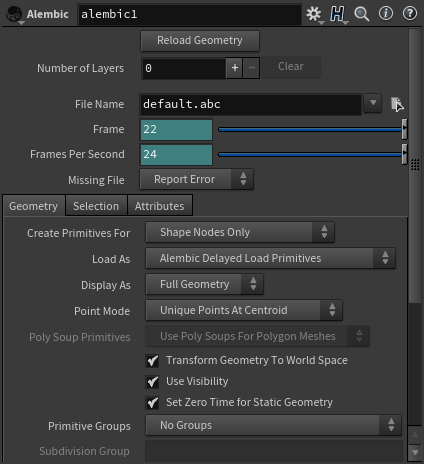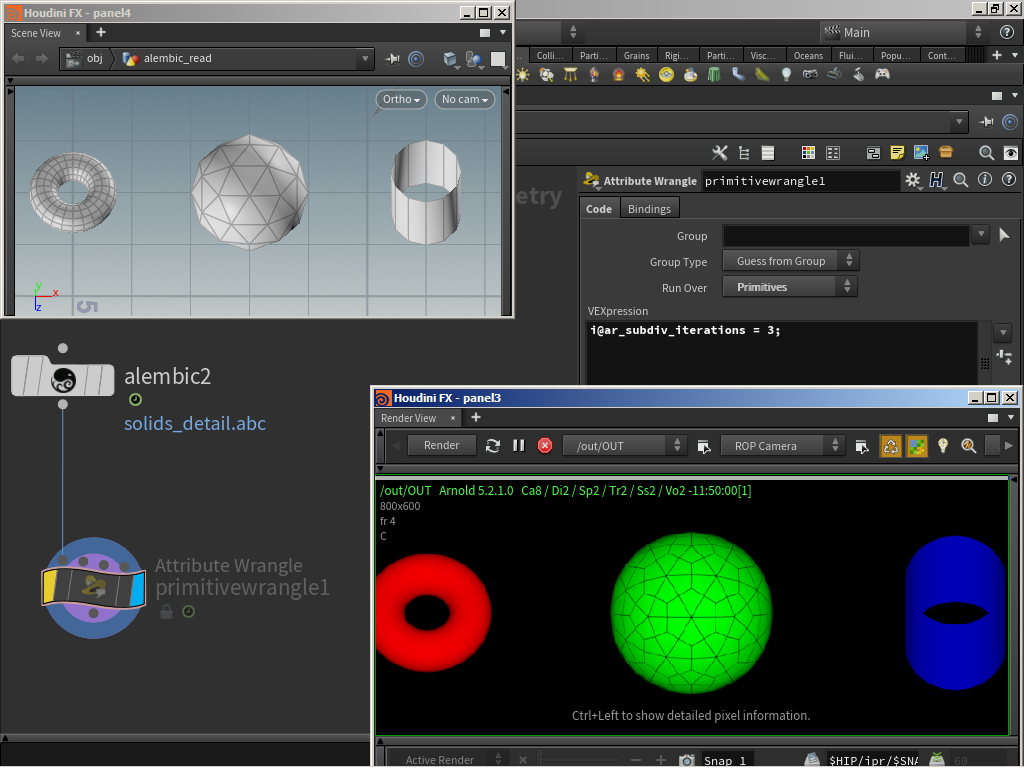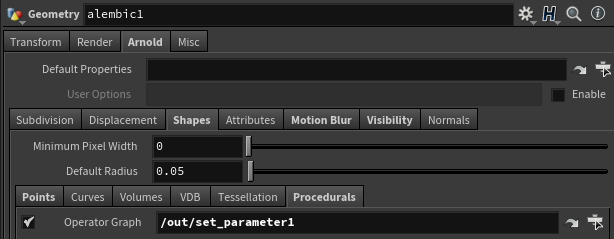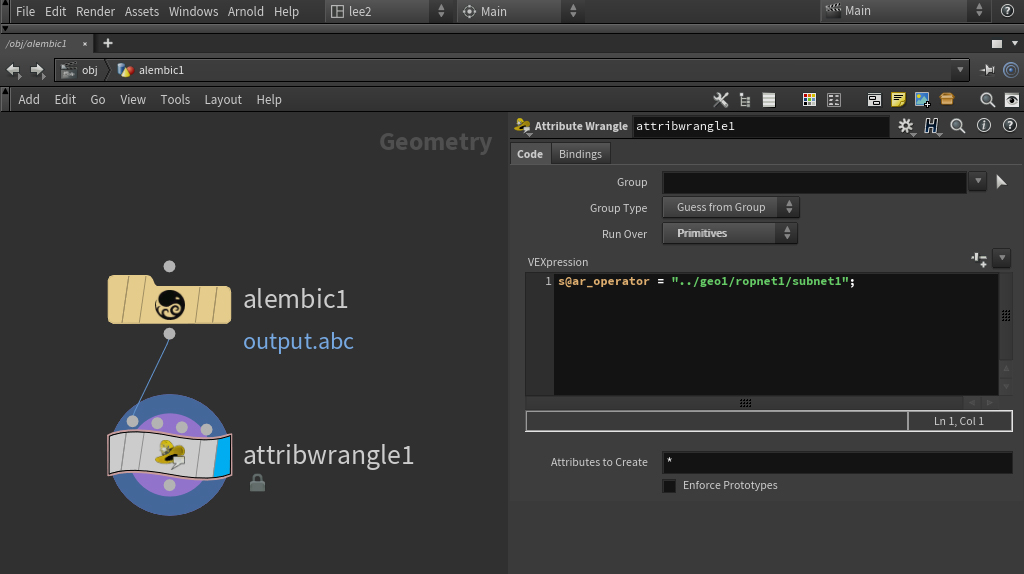Alembic Packed Primitives - Arnold for Houdini
A procedural node that is capable of reading Alembic files. HtoA supports Alembic (.abc) files.
Info: Information about common Arnold settings can be found here.
Alembic Material Translation
If an asset that has its materials applied when exported as an Alembic, it can be brought back in as a packed Alembic, and the material assignment will still work. You will need to enable Export Referenced Materials. It works by examining the Alembic file for the shop_materialpath at translation time.
It's also possible to create unified meshes that contain a shop_materialpath attribute that varies per primitive, and these materials will still be translated and assigned correctly.

Layers
Adds extra files that can be used to override properties in the Alembic file. When you load Alembic layers, it creates the abc_filenames intrinsic packed primitive attribute listing all the layers and the base filename. These are passed to the Alembic procedural.

An extra alembic layer called deform.abc has been added to override the point positions in the base layer model.abc
Material Attribute
Defines which alembic property in the file contains the material names, which, if present, will be used to create the per-polygon shidxs arrays on the polymesh node.
Alembic Packed Primitive Overrides
It is possible to override parameters per packed primitive using Houdini primitive attributes. This is possible using the Arnold properties on the OBJ node, but this method will override all packed primitives in the geometry context. Using primitive attributes gives finer-grained control over each shape in the Alembic file.
With floats use f@..., strings s@..., and integers i@... For enumeration types, you can use s@ for the string or i@ for the index.
Polymesh Examples
Some more examples when the packed primitive is a mesh are:
i@ar_visibility = 255;
i@ar_sidedness = 255;
i@ar_receive_shadows = 1;
i@ar_self_shadows = 1;
i@ar_opaque = 1;
i@ar_matte = 0;
f@ar_disp_padding = 1.0;
f@ar_disp_height = 0.5;
s@ar_subdiv_type = "catclark";
i@ar_subdiv_type = 0; // equivalent to s@ar_subdiv_type = "none";
i@ar_subdiv_iterations = 2;
i@ar_disp_autobump = 0;
i@ar_autobump_visibility = 1;You can use " **kick -info** " on target node types to find out the list of parameters that can be used as primitive attribute overrides i.e., {polymesh, curves, points}.
When using an integer for an enum type, use " kick -info " on the parameter to determine the indices to use. For example:
$ kick -info polymesh.subdiv_type
node: polymesh
param: subdiv_type
type: ENUM
default: none
enum values: none catclark linear and so that integer values {0,1,2} correspond to string values {"none", "catclark", "linear"} for this enum type.
So the two lines:
s@ar_subdiv_type = "catclark";
i@ar_subdiv_type = 1;are equivalent. Please note it's safer to use the string form in case the enum list changes in future Arnold releases.
Visibility
The Arnold parameter visibility can be modified using this technique, but you can't use the individual ray types, such as ar_visibility_diffuse_reflect, directly. To build the desired values from the bitfields, you would write, for example:
i@visibility = 32; // i@ar_visibility_diffuse_reflect=1;
i@visibility = 4; // i@ar_visibility_diffuse_transmit=1;
i@visibility = 64; // i@ar_visibility_specular_reflect=1;
i@visibility = 8; // i@ar_visibility_specular_transmit=1; You can also combine the flags by adding the bits, for example:
i@visibility = 36; // ar_visibility_diffuse_reflect and ar_visibility_diffuse_transmit only Info: See ray_types for a list of all the ray flags.
Below is an example of an Attribute Wrangle (primitive) node used to increase the number of subdivision iterations on a sphere within an Alembic file using the following VEX expression:
i@ar_subdiv_iterations = 3;
Subdivision of sphere increased to 3 using Attribute Wrangle -> Alembic
A scene file is available here.
Operator Graph
If you want to connect a Procedural Operator for alembic nodes, then pick the operator in the Arnold Properties for the OBJ node, under Arnold | Shapes | Procedurals | Operator Graph parameter. This will be applied to all of the Alembic procedurals created within the geometry context.

Alembic packed primitive operator override
You can define Alembic procedural operators with the packed primitive attribute ar_operator. This uses the operator connections with the packed geometry, so that merging will work.
You can use an Attribute Wrangle to set the operator link to an operator ROP network, as in the example below, where we are setting the result of the /obj1/ropnet1/subnet1 :

ar_operator VEX expression
